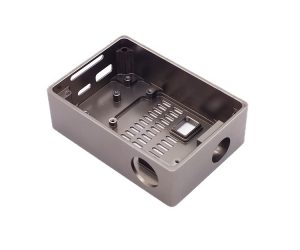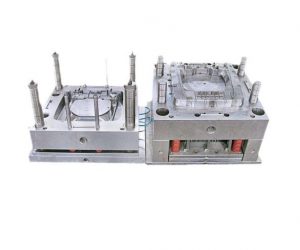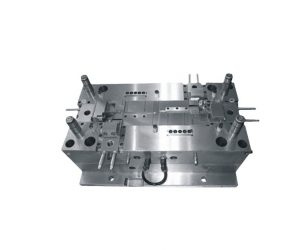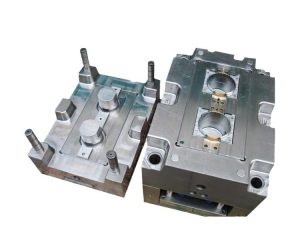In mold design, drawing all parts requires very meticulous attention and precision to ensure smooth manufacturing of the mold and production of high-quality plastic parts.
First, when drawing mold parts, designers must carefully consider every detail. They need to understand the shape, size, and function of the part and ensure that this information is accurately reflected in the drawing. Any slight mistake or oversight can cause the mold to not work properly or produce substandard parts. Therefore, designers must carefully check and verify every detail to ensure accuracy.
Secondly, when drawing mold parts, designers also need to consider material selection and processing. Different plastic materials have different properties and requirements, so when drawing a part, designers need to choose the material suitable for the specific application and ensure that it complies with relevant standards and specifications. Additionally, designers need to consider factors such as material shrinkage, strength and durability to ensure the part can withstand the required pressures and stresses during production.
In addition, when drawing mold parts, designers also need to consider the assembly and operation of the mold. They need to make sure the parts fit and connect correctly so that the mold assembles and operates smoothly. In addition, designers also need to consider the maintainability and ease of use of the mold so that operators can easily perform maintenance and adjustments.
Finally, designers also need to consider production efficiency and cost-effectiveness when drawing mold parts. They need to optimize the design of parts to reduce processing time and cost and increase production efficiency. This may involve using advanced CAD/CAM software to generate accurate part models, as well as selecting appropriate machining methods and equipment to achieve an efficient production process.
All in all, drawing mold parts is a task that requires great attention to detail and precision. Designers must carefully consider every detail, including aspects such as shape, size, function, material selection, assembly and operation, to ensure smooth manufacturing of molds and production of high-quality plastic parts. Through accurate drawings and optimized designs, designers can increase production efficiency and cost-effectiveness, thereby giving businesses a greater competitive advantage. Here are the key requirements for drawing all parts in mold design:
- Dimensional Accuracy: All part drawings must be dimensionally accurate, reflecting the exact specifications and tolerances as specified in the part design.
- Clear and Detailed Views: The drawings should include clear and detailed views of the part, showing all relevant features, surfaces, and dimensions. This helps the mold maker understand the part geometry and ensures precise replication in the mold.
- Material Specifications: Specify the material to be used for each part, as different parts of the mold may require different materials based on their functions and operating conditions.
- Surface Finish: Indicate the required surface finish for each part, especially for cavity and core surfaces, to achieve the desired level of smoothness and part appearance.
- Draft Angles: Ensure that all parts in the mold design have appropriate draft angles to facilitate easy part ejection and prevent molding defects like undercuts.
- Tolerances: Clearly specify the tolerances for critical dimensions, ensuring that the mold maker can meet the required part accuracy.
- Parting Lines and Gates: Clearly indicate the parting lines and gate locations on the part drawings, as they are essential for determining the mold's layout and overall design.
- Ejection System: Detail the ejection system, including ejector pins, sleeves, and ejection methods, to facilitate part removal from the mold after molding.
- Cooling System: Include the design of the cooling system to efficiently control mold temperature during the molding process and ensure consistent part quality.
- Interference Checks: Perform interference checks between the different mold components to avoid clashes or collisions during the mold assembly.
- Material Selection: Choose appropriate materials for each part based on factors such as wear resistance, thermal conductivity, and corrosion resistance.
- CAD Software: Use advanced computer-aided design (CAD) software to create the part drawings, which allows for accurate modeling, simulation, and analysis of the mold components.
- Communication: Effective communication between the mold designer and mold maker is crucial to clarify any doubts or queries related to the part drawings and to ensure alignment throughout the mold manufacturing process.
By adhering to these requirements and providing comprehensive part drawings, mold designers can ensure a smoother and more efficient mold manufacturing process, leading to the production of high-quality plastic parts in the final product.
The sequence of drawing the part drawing from the general assembly drawing of the mold shall be: first inside then outside, first complex then simple, first molding parts, then structural parts.
1) Graphic requirements: be sure to draw according to the scale, and allow zooming in or out. The view selection is reasonable, the projection is correct, and the layout is appropriate. In order to make the processing patent number easy to understand and easy to assemble, the graphics should be consistent with the general assembly drawing as much as possible, and the graphics should be clear.
2) Dimensioning shall be unified, centralized, orderly and complete. The order of dimensioning is: first mark the size of the main parts and the die inclination, then mark the fitting size, and then mark all the dimensions. On the drawing of non major parts, the matching dimensions shall be marked first, and then all dimensions shall be marked.
3) Surface roughness. Mark the most applied roughness on the upper right corner of the drawing, such as "Other 3.2" Other roughness symbols shall be marked on each surface of the part.
4) Other contents, such as part name, mold drawing number, material trademark, heat treatment and hardness requirements, surface treatment, drawing proportion, machining accuracy of free size, technical description, etc., shall be filled in correctly.
Mold design is a fascinating yet intricate process that demands a high level of technical expertise and meticulous attention to detail. Among the many facets of this process, crafting accurate and comprehensive drawings for all mold components stands out as one of the most crucial tasks. In this article, we’ll delve into the essential requirements for creating these drawings in mold design.
Clear and Accurate Dimensions
First and foremost, every part of the mold must feature clear and precise dimensions. This ensures that each component fits together seamlessly. It’s not just about the numbers; labeling these dimensions with appropriate tolerance values is vital to guarantee that the final mold operates as intended. Imagine the frustration of a misaligned part that could derail an entire production run!
Appropriate Views
Next, the drawing should encompass multiple views for each part, such as top, bottom, and side perspectives. Clearly labeling these views is essential to eliminate confusion during the manufacturing phase. Visualize how having a well-structured set of drawings can streamline the entire process, making it easier for everyone involved to understand their roles.
Material Specification
Equally important is specifying the material for each mold component. The choice of material can significantly impact the mold's performance and durability. For instance, selecting a high-quality steel can enhance the mold’s lifespan, while a less durable material might lead to premature wear and tear. This decision isn't just technical; it influences the overall success of the product being manufactured.
Surface Finish
The drawings should also indicate the required surface finish for each mold part. This detail is crucial for ensuring that the final product meets the desired aesthetic and functional standards. Whether it’s a smooth surface for aesthetic appeal or a textured finish for better grip, specifying this information can make a substantial difference in the final output.
Tolerances
Tolerances play a pivotal role in ensuring all mold parts align correctly. Each drawing must specify these tolerances, which ensures that when the mold is put together, it functions flawlessly. Picture the impact of a tiny miscalculation—what starts as a small oversight could lead to significant production issues down the line.
Assembly Instructions
Moreover, providing clear and concise assembly instructions is vital for all mold parts. This guidance is instrumental in ensuring that the mold is assembled accurately and performs as expected. Think about the ease it brings to a technician who can follow straightforward instructions, minimizing the risk of errors during assembly.
Bill of Materials
Lastly, including a detailed bill of materials in the drawing is essential. This list outlines all components needed for the mold, facilitating efficient tracking and ordering of required parts. Imagine how much smoother the workflow can be when everyone knows exactly what they need to bring to the table.
In conclusion, accurately drawing every part of the mold is absolutely vital for the success of the manufacturing process. By focusing on key requirements—such as clear and precise dimensions, appropriate views, detailed material specifications, specific surface finishes, tolerances, clear assembly instructions, and a thorough bill of materials—mold designers can significantly elevate the quality of the final mold.
When these standards are met, the results speak for themselves: not only does it lead to exceptional product quality, but it also aligns with performance benchmarks that can truly enhance a brand's reputation in the competitive marketplace. Think about it—when a product stands out for its reliability and quality, customers take notice and trust grows, paving the way for future success. So, let’s ensure that every aspect of mold design is approached with the care and precision it deserves!





